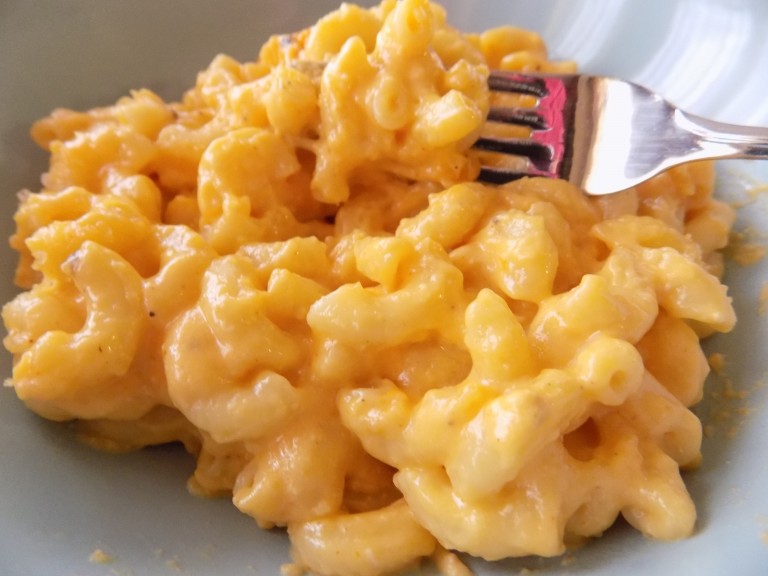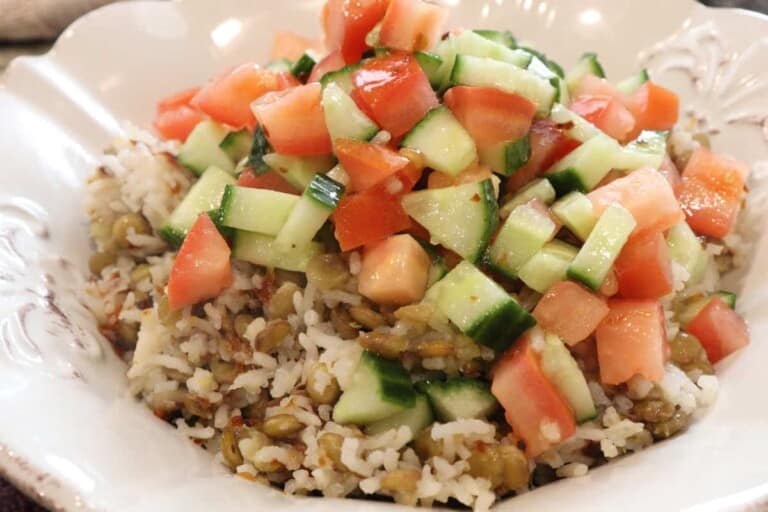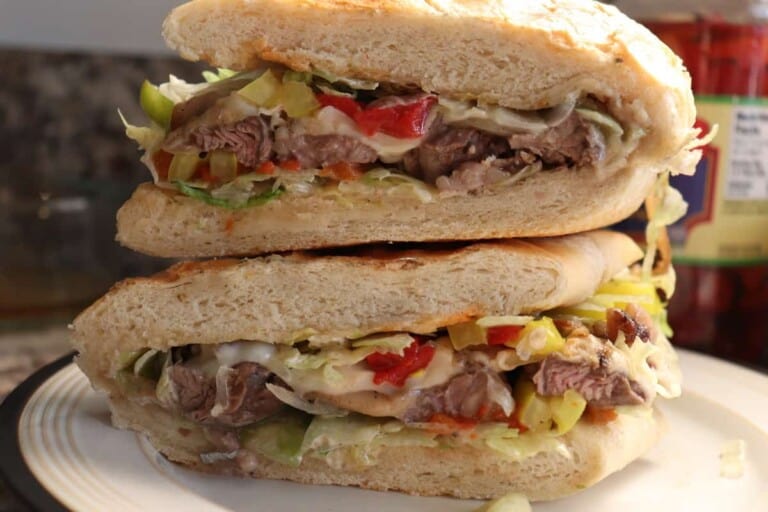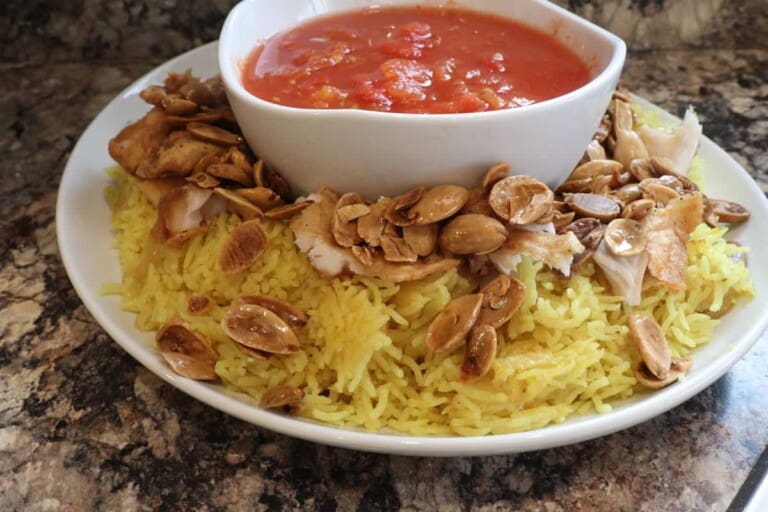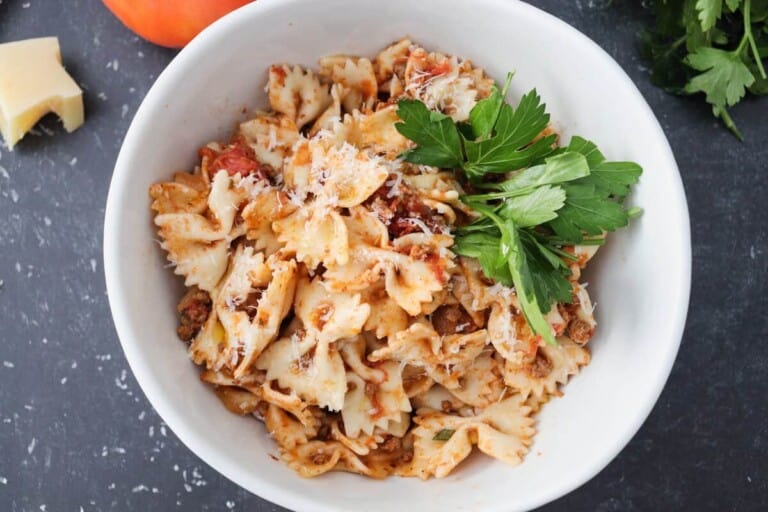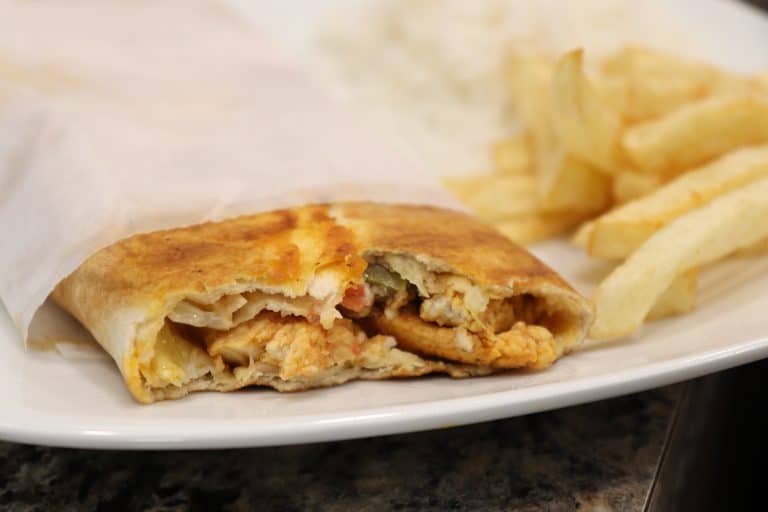Quick and Easy Steaks
Meat and potatoes are at the center of comfort food. It doesn't get much simpler or much better than that combination. However, many of us overcomplicate it. There's nothing wrong with experimenting in the kitchen, but sometimes it's better to stick with what you know. That's where steak and fries come in. So simple, yet so filling. Many overcomplicate steak. In reality, steaks are one of the easiest things to cook. You just have to know what you're working with and what you're looking for as an end result. This recipe for steak is meant to be easy. It doesn't overcomplicate the method of cooking the steak. It doesn't overcomplicate the flavor of the beef. This is one of my favorite ways to make steak because meat and potatoes should be easy and delicious. This recipe achieves that.
Steak Cut:
I'm using chuck steaks because they have a decent amount of fat and marbling, yet they're reasonably priced. However, if you want to apply this method to a more expensive cut, go ahead. Just understand different steaks contain different amounts of marbling and fat. That means not all steaks cook for the same amount of time, because there will be different amounts of fat to render. Here's a useful chart that you can use as a reference for the timing of a steak.
Doneness:
Now, let's talk about doneness. In my opinion, burgers and steaks should never be eaten above medium rare. Medium rare steaks are cooked to a safe temperature (130-140°F), but they retain the juices that make them so dang tasty.
There are many indicators of doneness. There is the temperature, of course, which is the most reliable. Just use a food thermometer and make sure it's between 130-140°F. Another indicator is time. As you cook steaks, you get used to the timing. You need to cook it for about 5-6 minutes, depending on the thickness, and you need it to rest for about ten minutes afterward. Some people can tell by touch. They either poke the steak with their fingers or with tongs and tell by the texture. There is a handy trick you can use as a reference point for the texture you're looking for. Some people can tell just by the coloring of the steak. That will take some time to master though. So, as you can see, there are many ways to indicate doneness.
Seasonings:
Lastly, let's talk about seasonings. Look, there are two people in this world. People who think that beef should be pure or people who think beef should be covered in tons of different seasonings. Guess which type I am? Yup. Beef should taste like beef. The ingredients I add to "marinade" the steak in are only to enhance the flavors of the beef. Salt, black pepper, olive oil, and butter. Simple and not at all distracting from the beef. If you want to fancy it up a bit, you can add a bit of fresh thyme or rosemary to add to the "marinade." Other than that, I wouldn't deviate from the recipe. It's meant to be simple and tasty. It's meant to highlight the flavor of the beef and that's what it does.
REASONS YOU SHOULD TRY THIS RECIPE:
- Perfect steaks every time with this method
- Easy dinner idea done in under 20 minutes
- Our minimalist approach allows the beef to shine
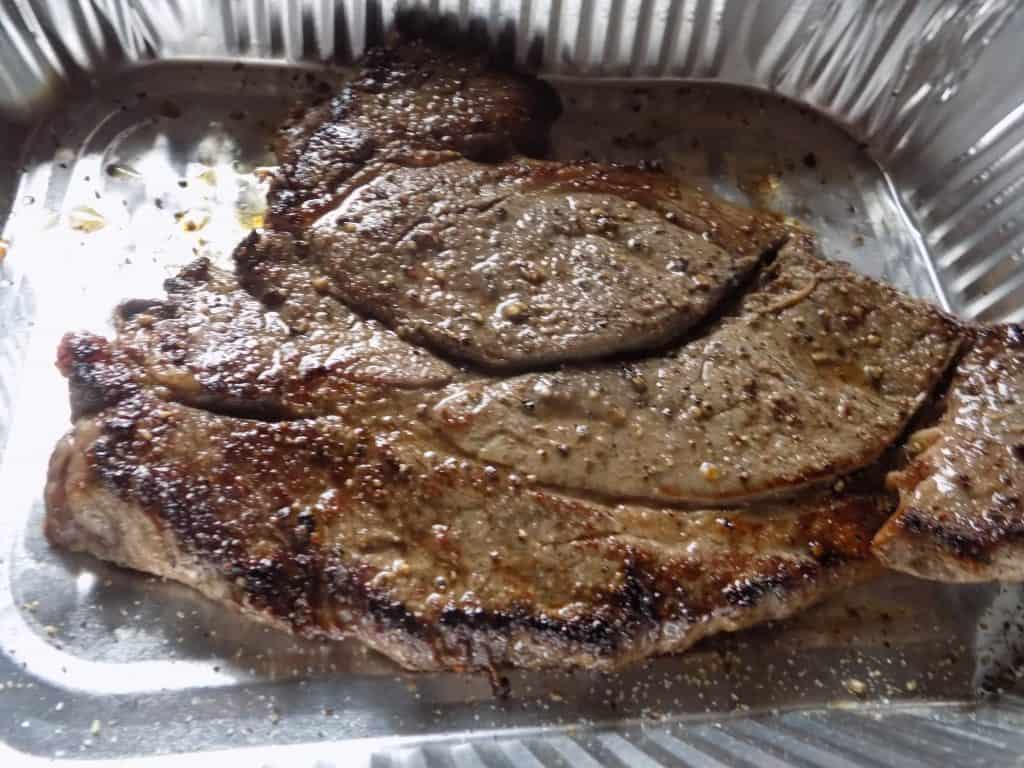
INGREDIENTS FOR QUICK AND EASY STEAKS:
- Chuck Steaks - cheap cut with enough fat to give us good flavor
- Butter and Olive oil - impart great flavor
- Salt and Pepper - brings out the flavor of the beef
HOW TO MAKE MY QUICK AND EASY STEAKS:
- Place your steaks on a sheet tray. I usually "marinade" the steak by rubbing it with olive oil, pads of butter, freshly ground black pepper, and salt on both sides, just enough to lightly season. The salt will absorb into the meat as it sits and the inside will be perfectly seasoned. Plus, it's Alton Brown approved. If that mad scientist of the culinary world approves, I think we're safe here. After prepping the steaks, cover with aluminum foil and refrigerate for at least an hour.
- After an hour, remove the pan from the fridge and allow the steaks to come up to room temperature for about 30 minutes. Prepare your flattop or griddle pan by drizzling it with some olive oil and heating it to medium-high to high heat. Add the pads of butter that you prepped the steaks with to the flattop. You can also use a cast iron skillet, but the steak may cook a tiny bit quicker. Also, if you use a cast iron skillet, you can baste the steak with the olive oil, and melted butter mixture.
- Place the steak on the flattop on top of the melted butter-oil mixture. After three minutes or so, flip the steak. Allow the other side to cook for a couple of minutes. There should be a crust and coloration on the steak. Test with finger, tongs, or temperature to indicate if it is slightly rare on the verge of becoming medium rare. For a ½" thickness, a chuck steak takes about five to six minutes to cook.
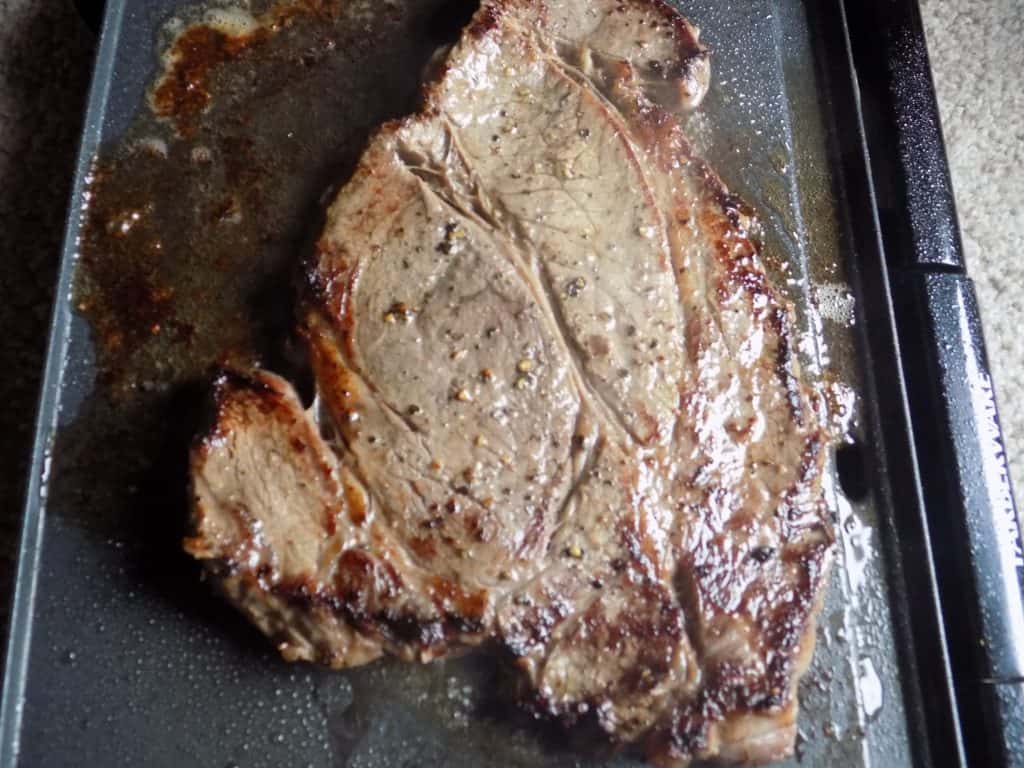

- Take the steak off the heat and place on a sheet tray. Season both sides with salt and black pepper to taste. Cover with aluminum foil and allow the steak to rest for about five to ten minutes before serving. Make sure to cut against the grain. Enjoy!
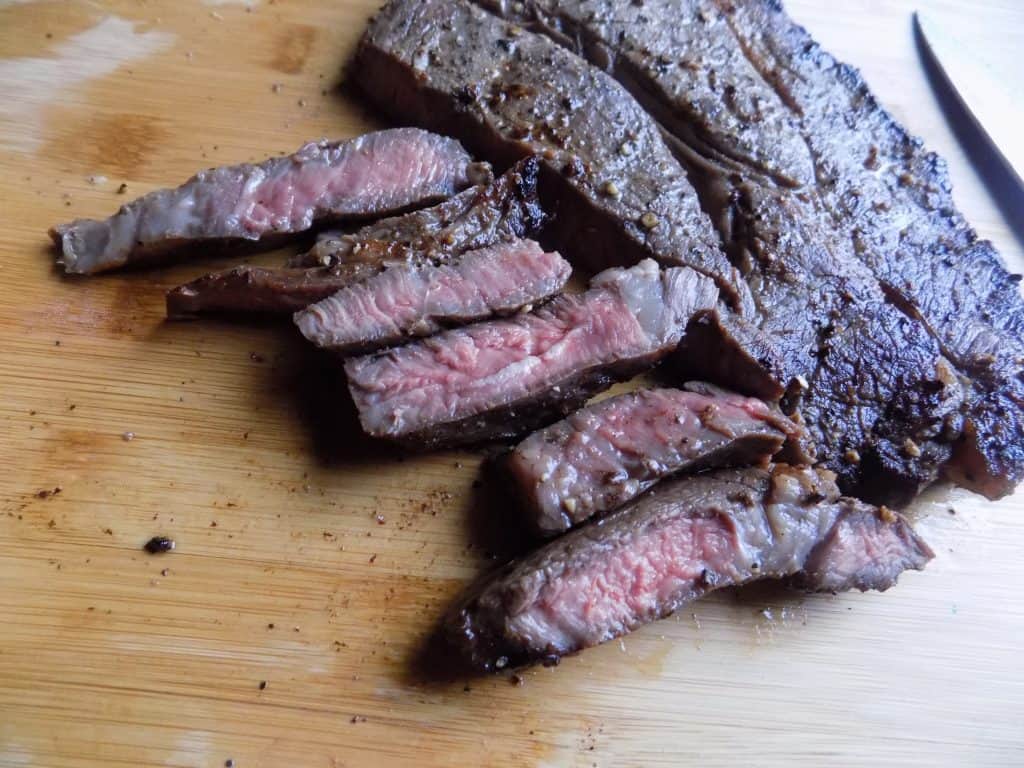
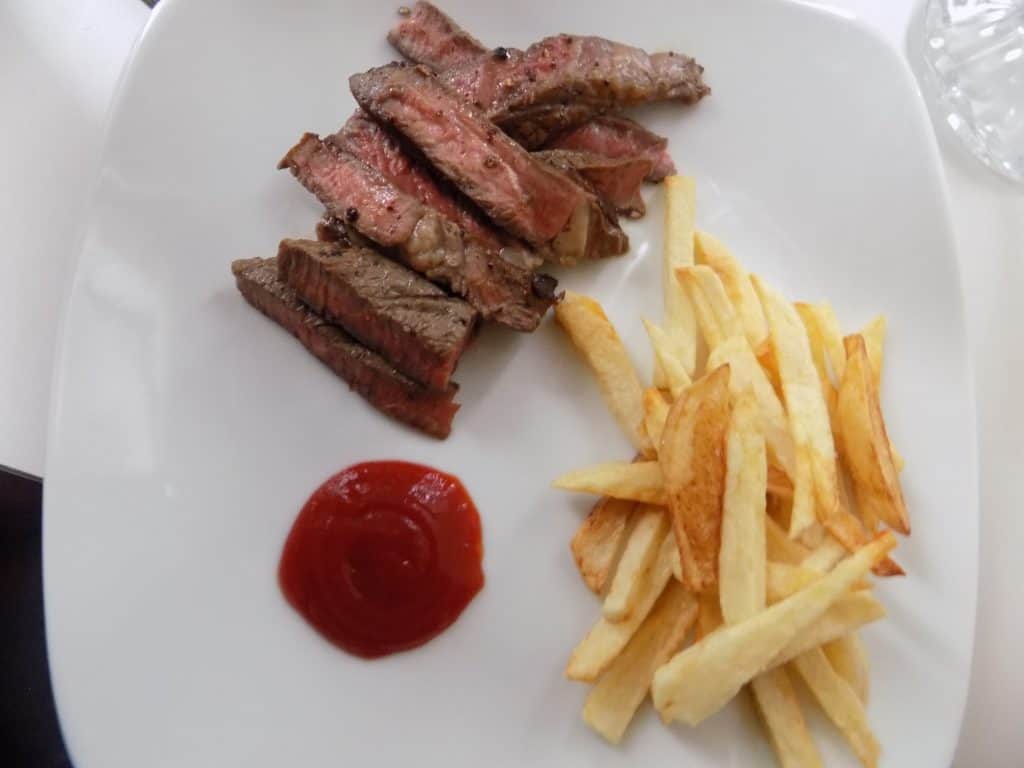
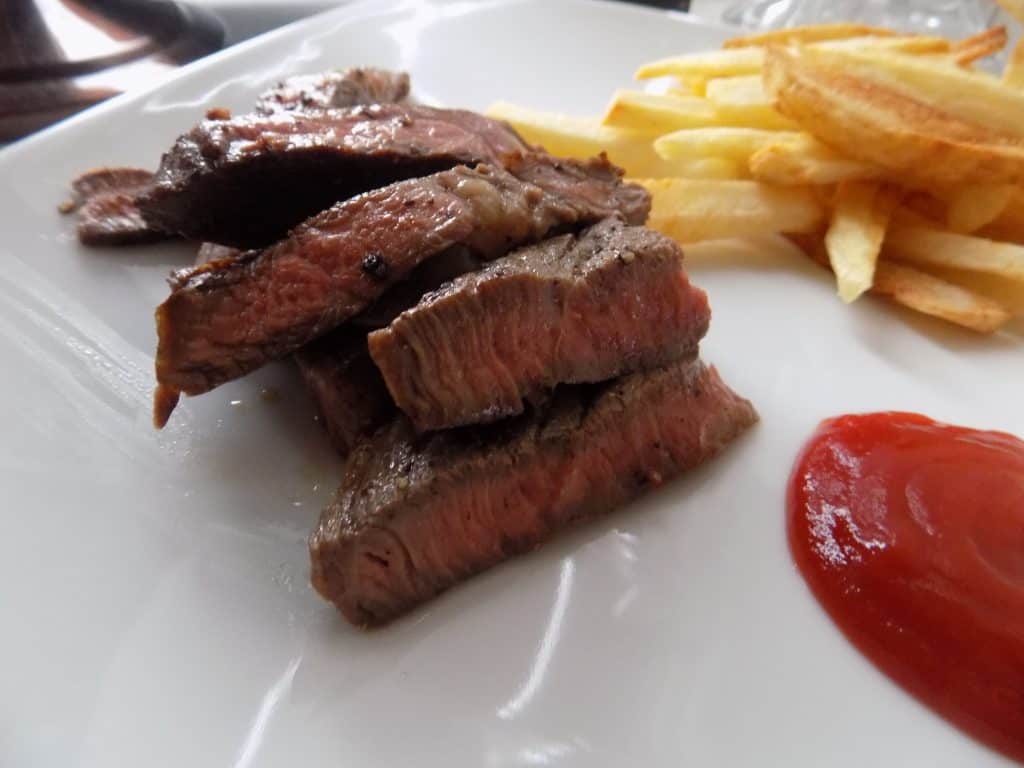
SOME MORE GREAT BEEF RECIPES:
Kafta Bil Sanieh (Baked Kafta and Potatoes)
SHOP MY BAKING ESSENTIALS:
https://www.amazon.com/shop/fayesfood
Quick and easy steaks Place the steaks on a sheet tray. Prep the steaks by rubbing with olive oil, pads of butter, sprigs of thyme or rosemary (optional), freshly ground black pepper, and salt on both sides, just enough to lightly season. After prepping the steaks, cover everything with aluminum foil and refrigerate for at least an hour. After an hour, remove the pan from the fridge and allow the steaks to come up to room temperature for about 30 minutes. Prepare your flattop or griddle pan by drizzling it with some olive oil and heating it to medium-high to high heat. Add the pads of butter that you prepped the steaks with to the flattop. You can also use a cast iron skillet, but the steak may cook a tiny bit quicker. Also, if you use a cast iron skillet, you can baste the steak with the olive oil and melted butter mixture. Place the steak on the flattop on top of the melted butter-oil mixture. After three minutes or so, flip the steak. Allow the other side to cook for a couple of minutes. There should be a crust and coloration on the steak. Test with finger, tongs, or temperature to indicate if it is slightly rare or on the verge of becoming medium rare. For a ½" thickness, a chuck steak takes about five to six minutes to cook. Take the steak off the heat and place it on a sheet tray. Season both sides with salt and black pepper to taste. Cover with aluminum foil and allow the steak to rest for about five to ten minutes before serving. Make sure to cut against the grain. Enjoy!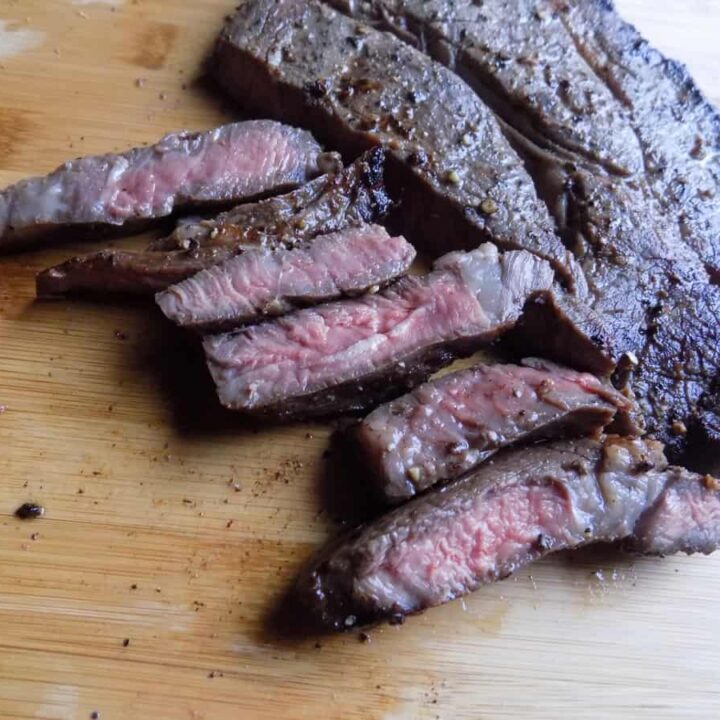
Quick and Easy Steaks
Ingredients
Instructions

